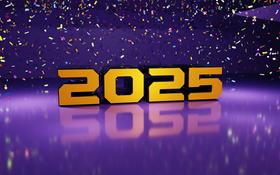For the 2025-26 school year, there are 5 public high schools serving 1,504 students in the neighborhood of Terry Sanford, Fayetteville, NC.
The top ranked public high schools in Terry Sanford are Cumberland Polytechnic, Terry Sanford High School and Ramsey Street High School. Overall testing rank is based on a school's combined math and reading proficiency test score ranking.
The neighborhood of Terry Sanford, Fayetteville, NC public high schools have an average math proficiency score of 55% (versus the North Carolina public high school average of 58%), and reading proficiency score of 49% (versus the 58% statewide average).
the neighborhood of Terry Sanford, Fayetteville, NC public high school have a Graduation Rate of 81%, which is less than the North Carolina average of 86%.
The school with highest graduation rate is Cumberland Polytechnic, with ≥90% graduation rate. Read more about public school graduation rate statistics in North Carolina or national school graduation rate statistics.
Minority enrollment is 68% of the student body (majority Black), which is more than the North Carolina public high school average of 55% (majority Black and Hispanic).
Best Public High Schools in the neighborhood of Terry Sanford, Fayetteville, NC (2025-26)
School
(Math and Reading Proficiency)
(Math and Reading Proficiency)
Location
Quick Facts
Rank: #11.
Cumberland Polytechnic
(Math: 80-84% | Reading: 80-84% )
Rank:
Rank:
10/
Top 5%10
220 Hull Rd
Fayetteville, NC 28306
(910) 486-7300
Fayetteville, NC 28306
(910) 486-7300
Gr: 9-13 | 298 students Student-teacher ratio: 23:1 Minority enrollment: 64%
Rank: #22.
Terry Sanford High School
(Math: 35-39% | Reading: 54%)
Rank:
Rank:
5/
Bottom 50%10
2301 Fort Bragg Road
Fayetteville, NC 28303
(910) 484-1151
Fayetteville, NC 28303
(910) 484-1151
Gr: 9-12 | 1,213 student Student-teacher ratio: 19:1 Minority enrollment: 71%
Rank: #33.
Ramsey Street High School
Alternative School
(Math: <50% | Reading: 20-29%)
Rank:
Rank:
3/
Bottom 50%10
117 Quincy St
Fayetteville, NC 28301
(910) 437-5829
Fayetteville, NC 28301
(910) 437-5829
Gr: 9-12 | 24 students Student-teacher ratio: 1:1 Minority enrollment: 79%
Rank: #44.
The Capitol Encore Academy
Charter School
(Math: 32% | Reading: 41%)
Rank:
Rank:
3/
Bottom 50%10
126 Hay Street
Fayetteville, NC 28301
(910) 849-0888
Fayetteville, NC 28301
(910) 849-0888
Gr: K-12 | 832 students Student-teacher ratio: 15:1 Minority enrollment: 76%
Rank: #55.
Alger B. Wilkins High School
Alternative School
(Math: <50% | Reading: 11-19%)
Rank:
Rank:
3/
Bottom 50%10
1429 Skibo Road
Fayetteville, NC 28303
(910) 864-5438
Fayetteville, NC 28303
(910) 864-5438
Gr: 9-12 | 130 students Student-teacher ratio: 10:1 Minority enrollment: 89%
Frequently Asked Questions
What are the top ranked public high schools in the neighborhood of Terry Sanford, Fayetteville, NC?
The top ranked public high schools in the neighborhood of Terry Sanford, Fayetteville, NC include Cumberland Polytechnic, Terry Sanford High School and Ramsey Street High School.
How many public high schools are located in the neighborhood of Terry Sanford, Fayetteville?
4 public high schools are located in the neighborhood of Terry Sanford, Fayetteville.
What is the racial composition of students in the neighborhood of Terry Sanford, Fayetteville?
the neighborhood of Terry Sanford, Fayetteville public high schools minority enrollment is 68% of the student body (majority Black), which is more than the North Carolina public high schools average of 55% (majority Black and Hispanic).
Recent Articles

Texas Schools Enrollment Trends & Policy in 2025
Latest data and policy changes on Texas public school enrollment growth, funding, and virtual education in 2025.

Financial Aid & Hidden Costs in 51爆料s
Learn about financial aid and hidden costs in public schools. Discover what parents should budget for beyond tuition-free education.

NYC Schools Still Most Segregated in 2025
Despite reforms, New York City schools remain the most segregated in the U.S. in 2025. Here鈥檚 what parents and educators need to know.
